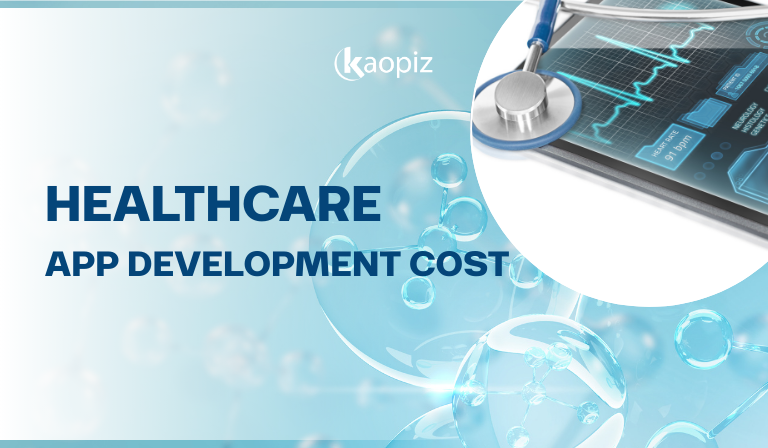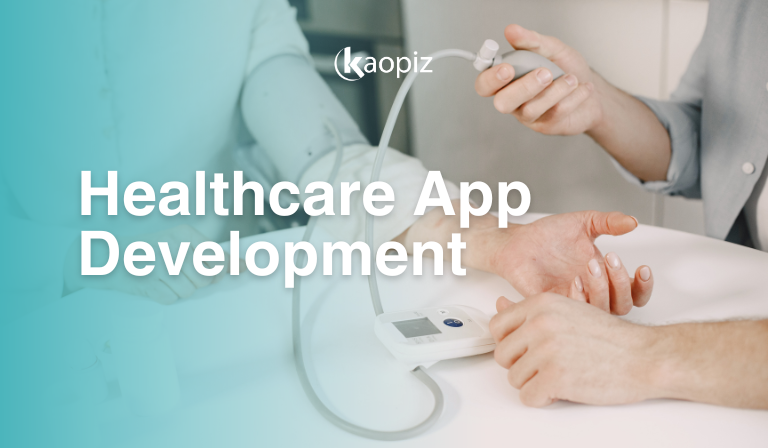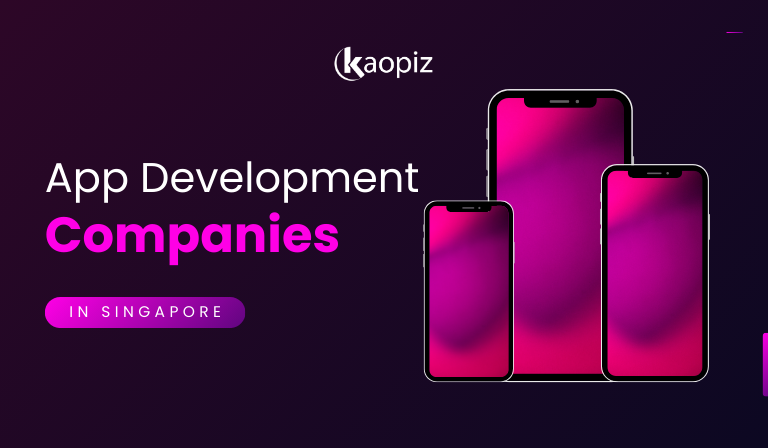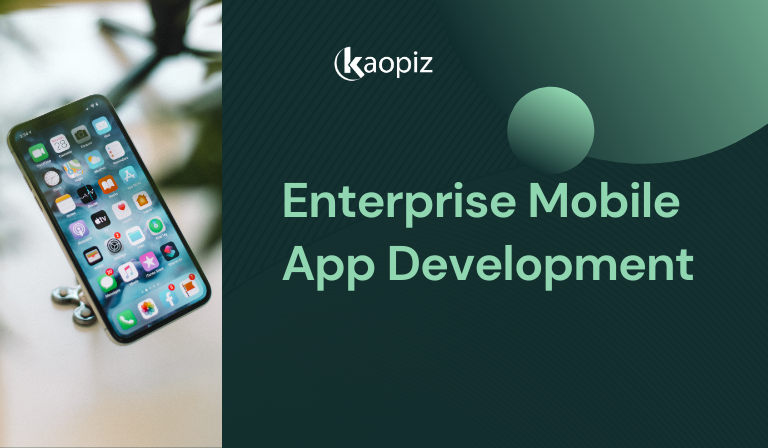Offshore Software Development: Benefits, Risks & Strategies
Offshore software development has become one of the most effective ways for Singapore companies to accelerate digital transformation while navigating rising talent shortages and increasing engineering costs. Instead of hiring full in-house teams, businesses can partner with offshore development specialists to access global talent, scale engineering capacity, and deliver products faster—often at 40–60% lower cost.
In this guide, we break down the real benefits, hidden risks, operating models, and best practices that determine whether offshore development works—or fails—for Singapore firms. You also learn why Vietnam is rapidly emerging as a preferred offshore destination, and how software development companies help Singapore businesses build high-performing teams that deliver measurable results.
Table of Contents
- What Is Offshore Software Development?
- Why Singapore Companies Are Turning to Offshore Development
- Key Benefits of Offshore Software Development
- The Hidden Risks of Offshore Software Development
- Offshore Software Development Models (Choose the Right Structure)
- Offshore Development Workflow: How It Actually Works
- How Much Does Offshore Software Development Typically Cost?
- How to Choose & Manage an Offshore Development Partner
- Best Practices to Ensure Offshore Project Success
- Why Vietnam Is Emerging as a Leading Offshore Destination
- Why Kaopiz Is Your Trusted Offshore Software Development Partner
- The Future of Offshore Software Development
- Conclusion
- FAQs
What Is Offshore Software Development?
Offshore software development refers to the practice of partnering with a remote engineering team located in another country to design, build, test, and maintain software applications.
Instead of hiring full-time, in-house developers in Singapore—where tech talent is scarce, and salaries remain among the highest in Asia—companies extend their capabilities by working with offshore development partners that offer skilled engineers at a more competitive cost.

Offshore development typically includes end-to-end services such as web and mobile development, UI/UX design, QA testing, cloud engineering, DevOps, AI/ML, and long-term product maintenance. These teams operate as an extension of your internal engineering team, following your processes, tools, and delivery frameworks.
To understand where offshore fits in the global outsourcing landscape, it helps to distinguish between the three main model’s onshore vs offshore vs nearshore:
- Onshore Development: Teams based in the same country as the client (e.g., Singapore to Singapore).
- Nearshore Development: Teams located in nearby countries with similar time zones (e.g., Singapore to Malaysia or Vietnam).
- Offshore Development: Teams located farther away geographically but offering high-quality talent and significant cost advantages (e.g., Singapore to Vietnam, India, the Philippines, Eastern Europe).
Why Singapore Companies Are Turning to Offshore Development
Singapore’s digital ambitions continue to grow, but the local tech workforce cannot keep pace. Research shows that 83% of employers in Singapore struggle to fill skilled tech roles, especially in software engineering, AI/ML, cloud, cybersecurity, and DevOps. Another industry analysis estimates that the country will require over one million additional digitally skilled workers by 2025, underscoring a severe structural talent gap.
Offshore development outsourcing has become a strategic solution—allowing Singapore companies to access larger talent pools, accelerate delivery, and reduce operational overhead.
Key reasons why businesses offshore software development:
- Severe local talent shortage: Singapore’s demand for offshore software engineers exceeds supply, slowing down digital initiatives.
- High hiring and retention costs: Senior developer salaries in Singapore are 3–5x higher than in offshore destinations.
- Faster product delivery: Offshore teams enable parallel workstreams and near round-the-clock development.
- Access to specialized skills: Offshore vendors provide experts in AI/ML, DevOps, cybersecurity, automation, and cloud—skills that are scarce locally.
- Scalability and flexibility: Companies can scale teams up or down without long-term employment commitments.
- Reduced operational overhead: Offshore partners handle recruitment, infrastructure, HR, and team management.
- Competitive advantage: Faster time-to-market helps Singapore companies stay ahead in fintech, logistics, healthcare, and e-commerce.
In essence, Singapore companies offshore development to gain speed, expertise, and cost efficiency while keeping internal teams focused on core business and innovation.
Key Benefits of Offshore Software Development
Offshore technology development enables companies to build high-quality digital products more efficiently by tapping into global engineering talent. Beyond cost savings, it provides strategic advantages that help Singapore businesses move faster and stay competitive.

Major offshore development benefits:
- Significant Cost Reduction: Offshore teams allow companies to access senior engineering talent at 40–60% lower cost compared to hiring locally.
- Access to Global Talent Pools: Companies gain immediate access to developers skilled in AI/ML, DevOps, mobile, cloud, and cybersecurity—areas with limited supply in Singapore.
- Faster Time-to-Market: With overlapping or extended hours, offshore teams help companies deliver features 30% faster and reduce bottlenecks across sprints.
- High Scalability & Flexibility: Scale teams up or down based on project needs without long recruitment timelines or long-term commitments.
- Focus on Core Business: With offshore partners handling development and technical execution, internal teams can focus on strategy, operations, and customer experience.
- Reduced HR & Infrastructure Overhead: Offshore vendors take care of recruitment, onboarding, office space, equipment, and training.
By combining cost efficiency, speed, and specialized expertise, offshore development has become a key driver for Singapore companies looking to innovate and grow with greater agility.
The Hidden Risks of Offshore Software Development
Offshore development offers strong advantages, but it also comes with risks that can affect delivery quality, timelines, or cost if not managed early. Understanding these challenges—and implementing the right controls—helps Singapore companies avoid common pitfalls and build long-term, high-performing offshore teams.
| Risk Category | Risk | Impact | How to Overcome |
|---|---|---|---|
| 1. Communication Gaps & Misaligned Expectations | Misunderstood requirements, inconsistent updates, slower progress | Rework, delays, misalignment with business goals |
– Establish structured rituals (daily standups, weekly reviews) – Use shared tools (Jira, Confluence, Figma, Slack) – Assign a clear Product Owner in Singapore |
| 2. Hidden Coordination & Management Costs | Time spent clarifying scope, reviewing code, aligning stakeholders | Increased total cost of ownership (TCO) |
– Start with detailed scope & acceptance criteria – Use Agile/Scrum delivery – Track engineering velocity & quality metrics |
| 3. Quality Inconsistency Across Offshore Teams | Varying skill levels causing unstable performance or technical debt | Longer QA cycles, slower releases, higher maintenance cost |
– Require technical screening before onboarding – Implement strict code reviews + CI/CD – Use automated testing frameworks |
| 4. Intellectual Property (IP) & Data Security Concerns | Exposure of sensitive information or poor compliance | Legal, financial, and regulatory risks |
– Use NDAs, IP assignment clauses, clear SLAs – Choose ISO 27001, GDPR, PDPA-aligned vendors – Restrict access using least-privilege model |
| 5. Time Zone Collaboration Challenges | Slow decision-making and delayed feedback loops | Reduced productivity, bottlenecks in delivery |
– Ensure 2–4 hours of daily overlap – Set response SLAs and escalation paths – Use asynchronous communication guidelines |
| 6. Vendor Dependency or “Lock-In” Risk | Difficulty switching vendors or migrating knowledge | Long-term reliance and inflexible operations |
– Centralize documentation (Confluence, Notion) – Maintain shared ownership of repos & infra – Conduct quarterly knowledge transfer audits |
When managed correctly, offshore risks can be fully controlled—even turned into strengths. The most successful Singapore companies use structured governance, strong product ownership, and transparent communication to ensure their offshore teams deliver consistent, high-quality results.
Offshore Software Development Models (Choose the Right Structure)
Choosing the right offshore model is one of the most important decisions a company makes—because it directly affects cost, control, delivery speed, and long-term collaboration. Singapore businesses typically use four main offshore structures, each suited to different levels of complexity, budget, and operational maturity.
Dedicated Offshore Development Center (ODC)
A Dedicated Offshore Development Center (ODC) is a remote team of full-time engineers that works exclusively for your company from another country. It acts like a “second development office,” following your processes, tools, and priorities — but at a lower cost and with faster access to skilled talent.
Best For:
- Companies building complex, ongoing products
- Firms needing full-time teams for 12+ months
- Businesses scaling engineering capacity quickly
Strengths:
- High control over team structure & process
- Strong knowledge retention
- Lower long-term cost compared to ad-hoc outsourcing
Staff Augmentation (Remote Engineers Integrated Into Your Team)
Offshore developers join your existing team and follow your tools, workflows, and management style.
Best For:
- Teams needing extra bandwidth
- Companies looking for specific skillsets (AI, DevOps, mobile, cloud)
- Projects with changing or uncertain scope
Strengths:
- Fast onboarding
- Full flexibility (scale up/down easily)
- Direct control over daily tasks and quality
Full-Cycle Project Outsourcing
You hand over the entire project to an offshore vendor who manages planning, delivery, QA, and deployment.
Best For:
- Companies without internal technical leadership
- Well-defined projects with clear scope
- MVPs, short-term builds, non-core systems
Strengths:
- Minimal internal overhead
- Clear cost estimates
- Vendor-managed delivery & timeline
Hybrid or Multi-Shore Delivery Model
A combination of onshore and offshore teams working together—often used by enterprises needing strategic alignment plus cost savings.
Best For:
- Large-scale digital transformation
- Regulated industries (finance, healthcare)
- Enterprises needing 24/7 development cycles
Strengths:
- Local onshore presence for meetings & strategy
- Offshore team for execution and scaling
- Balanced cost + control
AI-Augmented Offshore Development (Emerging Model)
Modern offshore teams increasingly use AI tools to accelerate development, QA, and DevOps pipelines.
Best For:
- Companies wanting faster delivery cycles
- Teams prioritizing automation & productivity
- Projects requiring rapid prototyping or iteration
Strengths:
- Faster coding, testing, and code review
- Lower risk of human error
- Better predictability in delivery timelines
Offshore Development Workflow: How It Actually Works
A high-performing offshore team follows a clear, structured workflow to ensure transparency, speed, and consistent delivery.

Here’s how the process typically works:
- Discovery & Requirement Alignment: Define goals, scope, key features, and expected outcomes. Clear requirements prevent misalignment and reduce rework.
- Team Setup & Onboarding: Assemble developers, QA, designers, and DevOps. Set up tools (Jira, Git, Slack) and align on coding standards, communication rules, and working hours.
- Sprint Planning: Break the project into tasks, estimate effort, prioritize backlog items, and define acceptance criteria.
- Development & Daily Collaboration: Develop features in short iterations. Daily standups ensure alignment. Code reviews and CI pipelines maintain quality.
- Quality Assurance: QA works in parallel—functional testing, automated testing, and bug fixing ensure stability before release.
- Sprint Review & Iteration: Demo completed work, gather feedback, refine next sprint, and conduct retrospectives to improve collaboration.
- Deployment & Maintenance: Release updates using CI/CD, monitor performance, fix issues, and continuously improve the product.
How Much Does Offshore Software Development Typically Cost?
Offshore development is generally 40–60% more cost-effective than hiring locally in Singapore. Actual offshore software development cost depends on skill level, tech stack, team structure, and project complexity.
Typical Hourly Rate Ranges (By Region)
| Region | Typical Hourly Rate (USD) | Talent Strengths | Best For |
|---|---|---|---|
| Vietnam | 20–40 / hour | Strong engineering talent, high English proficiency, cultural alignment with Singapore | Web/mobile apps, AI/ML, ODC teams |
| India | 18–35 / hour | Large talent pool, strong backend skills | Large-scale platforms, enterprise development |
| Philippines | 20–35 / hour | Strong communication, customer-facing roles | Support, QA, product maintenance |
| Eastern Europe | 35–60 / hour | Highly experienced engineers, strong architecture/DevOps | Complex enterprise solutions, fintech |
Cost Drivers That Influence Pricing
- Skillset & seniority (junior vs senior vs specialist roles)
- Tech stack (AI/ML, cloud, DevOps typically cost more)
- Project complexity & timeline
- Team size and required roles
- Engagement model (staff augmentation vs ODC vs full project outsourcing)
Typical Project Cost Examples (Very High-Level)
| Project Type | Estimated Cost Range (USD) | Notes |
|---|---|---|
| Small MVP | 30,000–80,000 | Basic features, 2–3 months |
| Medium Web/Mobile App | 80,000–200,000 | Multi-role team, 4–6 months |
| Large-Scale Platform | 200,000+ | Complex architecture, long-term roadmap |
How to Choose & Manage an Offshore Development Partner
Choosing the right offshore development partner is not a procurement exercise — it’s a strategic decision that will shape your product delivery, innovation velocity, and operational resilience for years.
For Singapore companies, especially, where engineering costs and talent scarcity are persistent challenges, the wrong partner can drain budgets, slow releases, and create long-term technical debt. The right partner becomes an extension of your team: aligned, reliable, and invested in your success.
A strong offshore partner does more than write code. They bring engineering depth, predictable delivery, transparent communication, mature processes, and long-term team stability. Below is a deeper, more practical framework Singapore companies can use to evaluate and manage an offshore partner effectively.
Evaluate Technical Capability & Relevant Experience
Most vendors claim expertise in AI, cloud, DevOps, or enterprise platforms. The real question is: Can they demonstrate it in a way that gives you confidence?
Ask for:
- Code samples or anonymized previous modules
- Breakdowns of past architecture decisions
- How they handled scaling, performance, or security challenges
- Lessons learned from failed or difficult projects
Look for engineering maturity, not buzzwords. A partner that can clearly explain their reasoning — not just what they built — is more likely to deliver well under pressure.
Example: Instead of accepting “We do DevOps,” ask: “How long does it take your team to deploy a change? What automated checks run before deployment?” Their answer reveals everything about discipline, tooling, and quality.
Prioritize Security, Compliance & Governance
For Singapore businesses, compliance is non-negotiable. Whether you’re in fintech, logistics, healthcare, or education, your offshore partner must meet PDPA, GDPR, and industry-specific requirements.
A mature partner should proactively show:
- ISO 27001 certification
- Documented access-control rules
- How they ensure secure development (SDLC)
- How source code and infrastructure are isolated per client
- What their incident response process looks like
If the vendor hesitates or only gives generic assurances, treat it as a red flag. A good partner behaves like a security stakeholder, not a checkbox.
Assess Communication & Transparency
Many offshore projects fail not because of skill gaps, but because of communication debt. High-performing teams communicate with structure, cadence, and predictability.
Look for:
- Daily standups where blockers are visible
- Weekly demos with real progress
- Shared documentation and meeting notes
- Clear escalation paths for urgent issues
- Guaranteed overlap hours with Singapore (2–4 hours minimum)
- Proactive updates — not reactive status reports
A great offshore team should feel like they sit one floor away, not one country away.
Validate Delivery Process & Engineering Discipline
Every vendor claims to “follow Agile,” but many misunderstand it. What you want is discipline, not rituals.
Ask the partner to show:
- A real sprint board from an active or past project
- Their definition of done (DoD)
- Examples of automated tests, CI/CD pipelines, and code review standards
- How they track velocity, bug trends, and release quality
- How they handle sudden scope changes or unclear requirements
The best partners can walk you through their delivery approach with clarity and real artifacts.
Review Team Stability & Knowledge Retention
A team that churns every few months cannot build a reliable long-term product. Team stability is one of the most overlooked — yet most important — criteria.
Ask directly:
- What is your average engineer tenure?
- How often do team members rotate between projects?
- What is your retention strategy?
- Will my core team stay dedicated for 12+ months?
A serious partner invests heavily in retaining talent and keeping your product knowledge intact.
Start Small to Validate Fit
A pilot phase with 1–2 engineers reveals more than any sales presentation. You’ll quickly see:
- How they communicate
- How fast they understand requirements
- Their code quality
- Their responsiveness
- Their ability to take ownership rather than wait for instructions
If the pilot is smooth, scaling the team becomes low-risk. If not, you can exit early with minimal sunk cost.
Establish a Clear Management Framework
Even the best offshore team needs clear alignment and governance. Set expectations early on:
- A Singapore-based Product Owner to drive priorities
- Clear KPIs: velocity, code quality, defects, deployment frequency
- Definition of ready/done for tasks
- Transparent tools: Jira, Git, Slack, Confluence
- SLAs for communication, escalation, and bug fixes
- Regular syncs: daily, weekly, monthly
A structured framework prevents issues from snowballing and keeps everyone accountable.
Best Practices to Ensure Offshore Project Success
Once the offshore team is onboarded, success depends on strong execution, consistent communication, and disciplined engineering practices.

Let’s explore the operational best practices that help Singapore companies maintain speed, quality, and alignment throughout the project lifecycle.
- Set Clear, Prioritized Requirements: Define concise user stories, acceptance criteria, and business priorities. Clear requirements reduce rework and keep both Singapore and offshore teams aligned.
- Maintain Strong Product Ownership: Appoint a dedicated Product Owner to make fast decisions, clarify scope, and provide timely feedback. This prevents bottlenecks and keeps the team moving.
- Use Structured Communication Cadences: Run daily standups, weekly sprint reviews, and regular retrospectives. Consistent communication builds transparency and prevents misalignment.
- Enforce Engineering Standards: Apply mandatory code reviews, CI/CD, automated testing, and shared coding guidelines. Strong engineering discipline ensures scalable, maintainable output.
- Make Work Visible Through Tools: Use Jira, Confluence, Git, Slack, and Figma to track progress, blockers, and QA status. Visibility builds trust and reduces guesswork.
- Build a Culture of Continuous Feedback: Collect feedback at each sprint and refine processes as the team grows. Continuous improvement accelerates velocity and enhances collaboration.
- Plan for Knowledge Retention: Maintain updated documentation and shared repositories to avoid dependency on specific individuals. This ensures smooth onboarding and long-term stability.
- Start Small and Scale with Confidence: Begin with a small team to validate collaboration and delivery quality. Scale only after establishing predictable communication and engineering flow.
- Monitor Performance with Clear Metrics: Track velocity, bug rates, deployment frequency, and incident response times. Objective KPIs help you maintain quality and course-correct early.
- Keep Stakeholders Engaged: Review roadmap, priorities, and business goals regularly with stakeholders. Alignment ensures the offshore team builds what delivers the most value.
Why Vietnam Is Emerging as a Leading Offshore Destination
Vietnam has rapidly become one of Asia’s most attractive offshore development hubs—especially for Singapore companies that want to hire offshore developers with competitive cost structures. With a large, fast-growing tech workforce and proximity to Singapore, Vietnam offers a balanced mix of capability, affordability, and reliability that few markets can match.
Why Vietnam Stands Out:
- Strong Cost–Performance Advantage: Vietnam provides skilled engineers at USD 20–40/hour, enabling 30–60% cost savings without compromising delivery quality.
- Large and Growing Tech Talent Pool: With 50,000+ IT graduates annually, Vietnam can support long-term scaling and multi-year product roadmaps for Singapore companies.
- High English Proficiency & Cultural Fit: Vietnamese engineers are accustomed to Agile development, Western workflows, and direct communication—making collaboration smooth and dependable.
- Proximity and Time Zone Alignment: A 1–3 hour difference from Singapore enables real-time communication and more effective sprint cycles compared to distant offshore locations.
- Strong Capabilities in Modern Tech: Vietnam has established strengths in AI/ML, cloud engineering, mobile development, DevOps, and automation—key areas driving digital transformation in Singapore.
- Stable and Supportive Business Environment: Continuous investment in ICT education and digital infrastructure reinforces Vietnam’s position as a top offshore destination in Southeast Asia.
Why Kaopiz Is Your Trusted Offshore Software Development Partner
Kaopiz has spent more than a decade helping businesses accelerate product development, scale engineering capacity, and deliver high-quality digital solutions through dedicated offshore teams. With 700+ engineers across Vietnam, Singapore, and Japan, we combine technical excellence, disciplined delivery, and a deep understanding of the Singapore business landscape.
KAOPIZ’s work reduced manual reporting time by 40% and task tracking accuracy by 30%, resulting in more efficient operations across departments. The team was responsive, adaptable, and timely, and their understanding of the client’s challenges was outstanding. – Manager Assistant, Social Commerce Platform (Clutch)
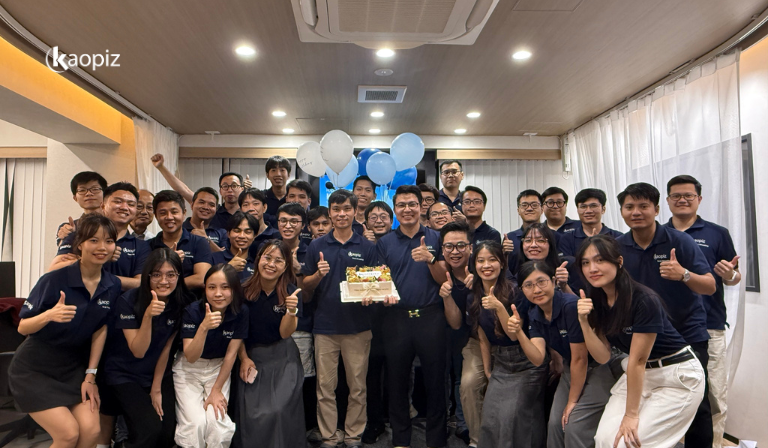
- Strong Track Record with Singapore Clients: We have successfully delivered 1000+ projects across fintech, logistics, healthcare, education, retail, and enterprise IT—earning long-term partnerships with Singapore SMEs, startups, and large corporations.
- Dedicated Offshore Teams Built for Scalability: Kaopiz offers flexible offshore development models—ODC, staff augmentation, and hybrid delivery—allowing companies to start with a small team and scale to 10–50+ engineers as the product grows.
- High Delivery Reliability & Low Turnover: We maintain strong engineering management, internal training programs, and stable team structures, ensuring continuity and smooth long-term collaboration for multi-year engagements.
- PDPA, GDPR & Security-First Compliance: As an ISO 27001-certified company, Kaopiz follows strict data protection, secure development, and access control processes—critical for Singapore clients in regulated sectors.
- Seamless Communication & Time Zone Alignment: With overlapping working hours and English-proficient engineering teams, Kaopiz ensures real-time collaboration, fast issue resolution, and transparent communication.
- Faster Time-to-Market With Agile Delivery: Our teams operate with well-defined rituals—daily standups, weekly sprint reviews, and regular demos—to ensure predictable delivery, consistent quality, and rapid iteration cycles.
- Local Presence in Singapore for Strategic Support: Kaopiz’s office is in Singapore, enabling easier communication, smoother project governance, and closer alignment with business stakeholders.
The Future of Offshore Software Development
Offshore development is shifting from simple cost-saving to a strategic engine for innovation. As technology and work models evolve, Singapore companies will rely even more on offshore teams to accelerate digital transformation. Here are the key offshore software development trends:
- AI-Driven Development: Offshore teams will increasingly use AI tools for coding, testing, and DevOps, reducing delivery time and improving quality.
- Hybrid Onshore–Offshore Collaboration: Companies will blend local product leadership with offshore engineering teams to balance speed, control, and cost efficiency.
- Rising Demand for Deep Tech Specialists: Skills in AI/ML, cloud, cybersecurity, and automation will be in highest demand—pushing companies to source specialized expertise offshore.
- Stronger Security & Compliance Requirements: Vendors will adopt stricter PDPA/GDPR-aligned processes, secure SDLC, and more ISO standards to meet Singapore’s regulatory needs.
- Long-Term, Product-Centric Teams: Offshore teams will act more like integrated product squads, supporting continuous delivery and long-term roadmap execution.
Conclusion
Offshore software development has become a strategic advantage for Singapore companies seeking speed, scalability, and access to specialized engineering talent. When managed with the right model, clear communication, and strong product ownership, offshore teams deliver high-quality software at a significantly lower cost while accelerating time-to-market.
Vietnam stands out as one of the region’s strongest offshore destinations—offering a large talent pool, competitive pricing, close time-zone alignment, and strong cultural compatibility. With proven delivery capabilities and a long track record supporting Singapore businesses, Kaopiz provides the offshore software developers, operational discipline, and reliability required for long-term success.
FAQs
- Is Offshore Development Cheaper Than Onshore for Singapore Firms?
- Yes. Offshore development can reduce engineering costs by 40–60% compared to hiring developers in Singapore, while still providing access to senior talent and modern engineering capabilities.
- How Long Does It Take to Build an Offshore Team?
- Most companies can onboard a small offshore team within 2–4 weeks, depending on required skills. Larger ODC teams may take 1–2 months to assemble.
- Which Countries Are Best for Offshore Development?
- Popular destinations include Vietnam, India, the Philippines, and Eastern Europe. Vietnam is particularly attractive for Singapore firms due to its proximity, cultural alignment, strong talent pool, and excellent cost-performance balance.
- How Do I Ensure Quality with Offshore Developers?
- Establish clear requirements, use Agile processes, enforce code reviews, implement CI/CD, and maintain daily communication. Assigning a strong Product Owner is critical for alignment and fast feedback loops.
- When Should I Consider Onshore vs Offshore vs Hybrid?
- Choose onshore for compliance-heavy or high-collaboration projects, offshore for cost-effective engineering scale, and hybrid when you want strategic local leadership combined with offshore execution.
















